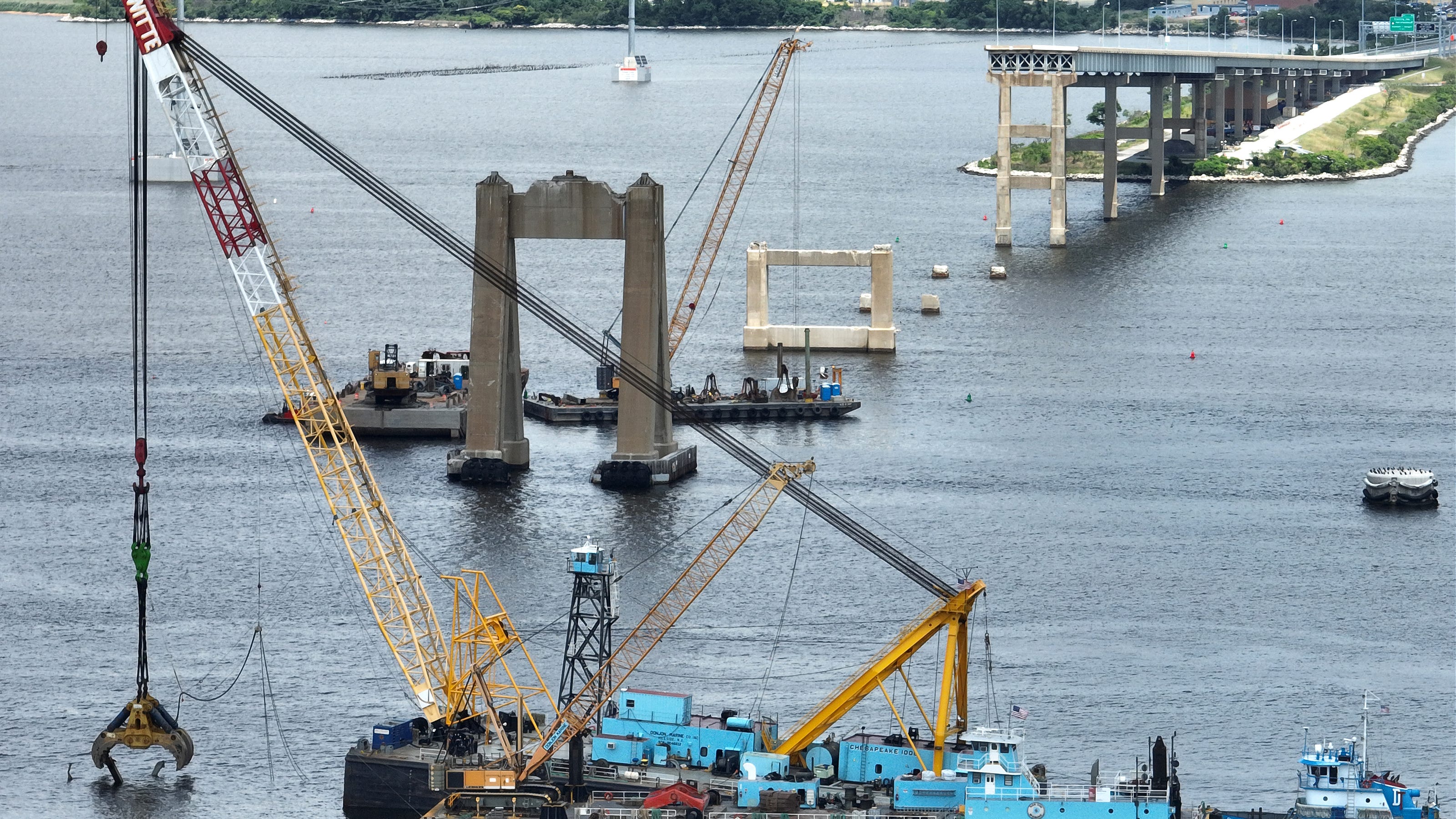US Bridges: Deadly Ship Collision Risk – A Growing Threat?
Editor’s Note: Concerns regarding the increasing risk of deadly ship collisions with US bridges are escalating. This article explores the problem, its causes, and potential solutions.
Why This Topic Matters
The safety and security of our nation's infrastructure are paramount. The potential for catastrophic ship collisions with US bridges poses a significant threat to lives, property, and the economy. This issue impacts maritime commerce, national security, and the overall well-being of coastal communities. This article will delve into the key factors contributing to this risk, examining the vulnerabilities of bridges, the challenges faced by maritime traffic management, and the crucial need for proactive solutions. Keywords: Bridge safety, ship collisions, maritime safety, US infrastructure, coastal security, navigation safety.
Key Takeaways
| Point | Description |
|---|---|
| Aging Bridge Infrastructure | Many US bridges are outdated and lack modern collision-prevention technology. |
| Increased Ship Traffic | Growing maritime traffic increases the likelihood of accidents. |
| Navigation System Gaps | Deficiencies in navigation systems and communication protocols pose challenges. |
| Lack of Comprehensive Plan | A unified, nationwide strategy for addressing this issue is currently lacking. |
US Bridges: A Growing Collision Risk
The increasing frequency of near-misses between ships and bridges across the United States highlights a critical vulnerability in our nation's infrastructure. This isn't just a matter of inconvenience; the potential consequences of a major collision are catastrophic: loss of life, significant economic disruption due to infrastructure damage, and environmental hazards from potential spills. This risk is amplified by a confluence of factors.
Key Aspects of the Problem
- Aging Infrastructure: Many bridges, particularly those in older ports and waterways, lack modern collision-avoidance systems. Deteriorating structural integrity further exacerbates this risk.
- Increased Shipping Traffic: The volume of maritime traffic has grown substantially in recent years, creating more opportunities for accidents. Larger vessels further increase the potential impact of a collision.
- Navigation System Deficiencies: Gaps in navigation systems, inadequate communication protocols, and a lack of real-time monitoring contribute to the problem. Poorly maintained navigational aids also increase risk.
Detailed Analysis: A Case Study Approach
Analyzing specific incidents – even near-misses – reveals crucial patterns. For example, a review of incidents in the [insert specific location/waterway] highlights the challenges posed by [specific challenges, e.g., strong currents, limited visibility]. Comparisons between bridges with advanced safety features and those without reveal a significant difference in accident rates. This data underscores the importance of investing in modernization and preventative measures.
Interactive Elements
Improved Navigation Technology
Introduction: The adoption of advanced navigation technologies is crucial for mitigating the risk of bridge collisions.
Facets: This includes the implementation of advanced radar systems, improved electronic chart display and information systems (ECDIS), automatic identification systems (AIS), and real-time monitoring of vessel traffic. The roles of maritime pilots and the Coast Guard in ensuring safe navigation are also paramount. Risks include high initial investment costs and the need for extensive crew training. Mitigations involve phased implementation and government subsidies. The impact of improved technology is a significant reduction in collision risk.
Strengthening Bridge Design and Construction
Introduction: Strengthening the design and construction of bridges to withstand collisions is another crucial aspect of enhancing maritime safety.
Further Analysis: This requires considering the potential impact forces of various ship types and implementing robust structural designs that can absorb impact energy. Practical examples include the use of impact-resistant materials and the incorporation of buffer zones. The closing point emphasizes the importance of incorporating resilience and disaster preparedness into bridge infrastructure planning.
People Also Ask (NLP-Friendly Answers)
Q1: What is the biggest risk associated with ship collisions with US bridges?
A: The biggest risk is catastrophic damage to the bridge, potential loss of life, significant economic disruption, and environmental damage from potential spills.
Q2: Why are so many US bridges vulnerable to ship collisions?
A: Many US bridges are aging and lack modern collision-prevention technologies. Increased shipping traffic further exacerbates the risk.
Q3: How can I help improve bridge safety?
A: You can support initiatives advocating for improved bridge safety infrastructure and regulations. Contact your elected officials and raise awareness.
Q4: What are the main challenges in improving bridge safety?
A: The main challenges include funding limitations, the complexity of upgrading existing infrastructure, and the need for widespread adoption of new technologies.
Q5: What role does the Coast Guard play in bridge safety?
A: The Coast Guard plays a crucial role in regulating maritime traffic, enforcing safety standards, and responding to incidents.
Practical Tips for Enhancing Bridge Safety
Introduction: These tips offer practical steps toward enhancing bridge safety and reducing the risk of collisions.
Tips:
- Invest in advanced collision-avoidance systems.
- Implement robust vessel traffic management systems.
- Improve navigation chart accuracy and detail.
- Strengthen bridge designs to withstand impacts.
- Conduct regular bridge inspections and maintenance.
- Provide comprehensive training for maritime personnel.
- Enhance communication protocols between ships and shore-based authorities.
- Develop a comprehensive national strategy for bridge safety.
Summary: Implementing these tips will significantly improve bridge safety and reduce the risk of costly and deadly collisions.
Transition: Let's now summarize the key takeaways of this important discussion.
Summary (Resumen)
This article highlighted the critical issue of ship collisions with US bridges, emphasizing the interplay of aging infrastructure, increased shipping traffic, and deficiencies in navigation systems. Solutions involve technological upgrades, improved bridge design, stronger regulations, and a comprehensive national strategy.
Closing Message (Mensaje Final)
The potential for catastrophic consequences demands immediate and decisive action. Investing in bridge safety isn't merely an expense; it's an investment in protecting lives, preserving our economy, and ensuring the future resilience of our national infrastructure. What concrete steps can we take today to prevent future tragedies?
Call to Action (Llamada a la acción)
Share this article to raise awareness about this critical issue. Contact your elected officials and urge them to prioritize bridge safety funding. Learn more about maritime safety initiatives at [link to relevant resource].

